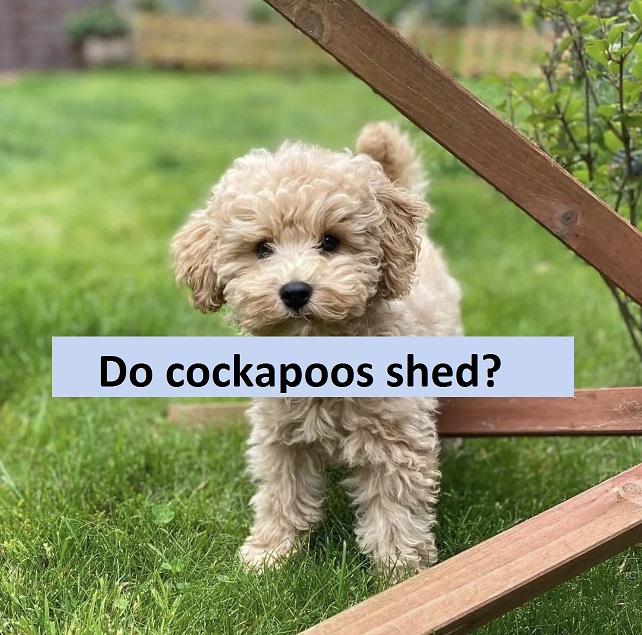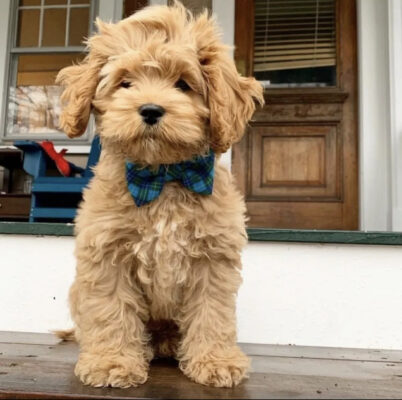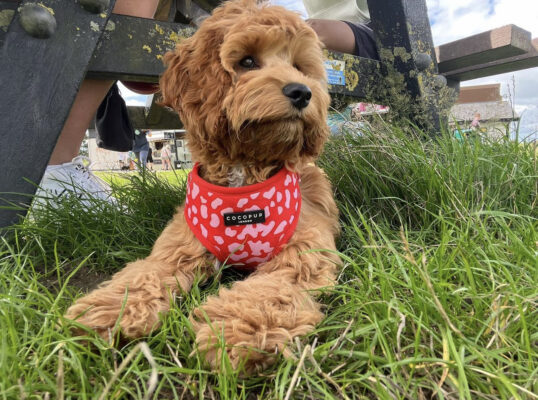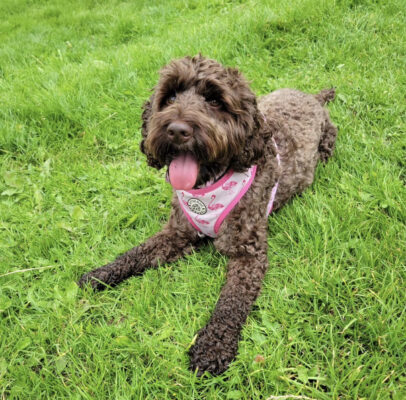Grooming
Do cockapoos shed?2023
Unveiling the Mystery of Cockapoo Shedding: Causes, Types, and Genetics
Exploring the world of Cockapoo puppies is an exciting endeavor, filled with the promise of adorable companionship and allergy-friendly traits. Cockapoos, often hailed as “completely non-shedding, hypoallergenic dogs,” captivate the hearts of dog lovers. In this comprehensive guide, Cheappuppiesforsale.com delves into the intricacies of Cockapoo shedding. From shedding levels and reasons why cockapoos Do shed to prevention strategies and shedding management, we unravel it all. Let’s embark on this journey together!
Do Cockapoos Shed?
The question on many minds is, “Do Cockapoos shed?” Furthermore, what about the claim of Cockapoos being hypoallergenic? Thanks to their Poodle lineage, Cockapoos are celebrated for their nearly hypoallergenic, low-shedding coats. Nonetheless, it’s crucial to debunk the myth of a completely hypoallergenic dog, as even Poodles shed hair. However, the unique structure of their fur tends to trap the shed hair within their coat, reducing the likelihood of triggering allergies.
While the Poodle genes significantly contribute to Cockapoo coat attributes, it’s worth noting that some Cockapoos might exhibit shedding due to their Cocker Spaniel lineage. With the Cocker Spaniel often possessing a shedding undercoat, it’s logical to anticipate variance in the non-shedding Poodle coat inheritance.
Unraveling the Reasons Behind Cockapoo Shedding
Delving into the reasons behind Cockapoo shedding unveils a multifaceted picture influenced by various factors, most notably their coat type and genetic makeup. Let’s dive deeper into these contributing factors.
A)Deciphering Coat Types
Cockapoos showcase diverse coat types, often shaped by their genetic inheritance from both the Cocker Spaniel and Poodle. Three primary coat types emerge:
Curly Coat: Resembling the Poodle’s distinctive curly hair, this type sheds the least among the three. The absence of an undercoat minimizes shedding, making it an ideal choice for allergy-prone individuals. However, it’s crucial to recognize that maintaining the curly coat demands rigorous care.
Wavy Coat: A harmonious blend of the Cocker Spaniel and Poodle traits, the wavy coat exhibits moderate shedding tendencies. Whether or not an undercoat is present, shedding remains controlled, and maintenance is typically less challenging compared to the curly coat.
Straight Coat: Reflecting the Cocker Spaniel’s straight coat, this type is most prone to shedding due to its undercoat. However, thanks to the infusion of Poodle genes, shedding is notably reduced compared to a purebred Cocker Spaniel.
B)The Role of Genetics and Generation
The lineage of Cockapoos plays a pivotal role in determining their shedding tendencies. A Cockapoo’s genetic composition primarily shapes its coat type and shedding behavior. A higher prevalence of Poodle genes often leads to low-shedding coats, while a Cocker Spaniel-dominated lineage may introduce some shedding. This genetic interplay becomes evident when assessing a Cockapoo’s generation, a key indicator of its coat characteristics. However, genetic testing remains a reliable method used by ethical breeders to accurately predict the coat traits of their puppies.
Beyond Genetics and Coat Types: Unraveling Cockapoo Shedding
While genetics and coat types significantly impact Cockapoo shedding, it’s important to acknowledge the existence of other variables. These variables encompass health-related factors such as diet, allergies, sensitivities, stress, anxiety, and even the presence of fleas and ticks.
The Role of Diet in Cockapoo Shedding
Improper diet ranks among the leading causes of excessive Cockapoo shedding. Ensuring your pup receives essential nutrients is crucial. Not all dog food formulas are equal, and inadequate nutrition can lead to skin irritation, nutrient deficiencies, and increased shedding. Gradual transitions between brands and formulas are advised to prevent tummy issues and skin/coat problems.
Allergies and Sensitivities as Shedding Triggers
Similar to other Doodle breeds, Cockapoos can develop food and skin allergies. Sensitivities or allergies can trigger shedding beyond the norm. Allergens and unsuitable foods can induce itchiness, skin rashes, and dryness, leading to excessive shedding and hair loss. Even certain ingredients in dog shampoos and conditioners can contribute to skin issues and shedding.
Addressing Fleas, Ticks, and Parasites
Fleas, ticks, and parasites commonly cause skin problems in Cockapoos, mimicking allergic reactions. Itchy behaviors and excessive scratching often lead to bald spots in the coat. Dead hair accumulates on floors and furniture. Timely attention to flea and tick prevention can mitigate this issue and reduce shedding associated with infestations.
Unveiling the Impact of Anxiety and Stress
Cockapoos, sensitive and affectionate creatures, can experience anxiety and stress. These emotional states manifest in compulsive licking and scratching, often resulting in excessive shedding, hair loss, and bald patches. Factors such as separation anxiety, changes in routine, moving, boredom, and lack of stimulation can contribute to stress-induced shedding.
Shedding Levels Based on Coat Type
The degree of Cockapoo shedding is closely linked to their coat type. Understanding your pup’s coat type helps manage shedding expectations.
Curly-Coated Cockapoos: Ideal for minimal shedding due to lack of undercoat. Wavy-Coated Cockapoos: Moderately shed with minimal matting risks. Straight-Coated Cockapoos: Shed more than curly/wavy types, but less than Cocker Spaniels.
Influence of Generation on Cockapoo Shedding
A Cockapoo’s generation offers insights into potential shedding tendencies. The generation signifies the proportion of parental breed genetics within the pup. While not definitive, generations provide useful guidance for understanding shedding traits.
F1 Cockapoos: 50% Poodle and 50% Cocker Spaniel, shedding varies, influenced by individual genetics. F1b Cockapoos: 75% Poodle and 25% Cocker Spaniel, generally allergy-friendly with low-shedding coats. F1bb Cockapoos: 87.5% Poodle and 12.5% Cocker Spaniel, least prone to shedding with a strong Poodle influence. F2 Cockapoos: Similar to F1, 50-50 mix, shedding levels vary among pups. F2b Cockapoos: 75% Poodle and 25% Cocker Spaniel, minimal shedding tendencies. F2bb Cockapoos: 87.5% Poodle and 12.5% Cocker Spaniel, allergy-friendly, rarely shed.
Effective Strategies to Minimize Shedding
Daily Brushing: Regular brushing aids in shedding control, particularly for curly coat Cockapoos. Nutritional Balance: Provide a well-rounded diet to prevent skin issues and excessive shedding. Allergy Management: Address allergies and sensitivities promptly to minimize shedding triggers. Stress Reduction: Offer mental and physical stimulation to alleviate stress-induced shedding. Conclusion
Conclusion
Cockapoo shedding remains a nuanced topic influenced by diverse factors, including coat type, genetic heritage, and generation. While the allure of a hypoallergenic, low-shedding companion is enticing, the reality involves embracing variations inherent in these charming Doodles. Understanding the mechanisms why Do cockapoos shed empowers prospective pet parents to make informed decisions, ensuring the harmonious coexistence of their furry friend and household. At Cheappuppiesforsale.com, our commitment extends beyond matching families with the perfect Cockapoo; it encompasses providing knowledge that nurtures a seamless bond between pet and owner. Let’s celebrate the uniqueness of Cockapoos and embark on a shared journey of companionship!
As we delve into the intricate web of Cockapoo shedding, we uncover the multi-faceted factors contributing to shedding patterns. While genetics and coat types play pivotal roles, other variables such as diet, allergies, stress, and infestations must not be overlooked. By understanding these elements and adopting proactive measures, you can ensure your Cockapoo enjoys a healthy, comfortable, and well-maintained coat. Cheappuppiesforsale.com is dedicated to providing valuable insights and knowledge that enhance the bond between pet and owner
“”Read More Articles about cockapoos below




